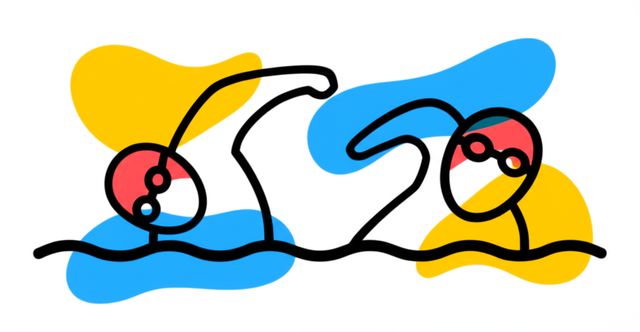Swimming Technique
Swimming Technique is a fundamental aspect of swimming, encompassing the movements and coordination required for efficient and effective propulsion through water. It involves a combination of body positioning, limb movements, and breathing techniques, all of which play a crucial role in maximizing speed, distance, and endurance.
Understanding Swimming Technique
To understand swimming technique, it is essential to delve into the various strokes used in swimming. The four main competitive swimming strokes are Front Crawl (freestyle), Backstroke, Breaststroke, and Butterfly. Each stroke has its unique set of movements and requires specific body mechanics to execute efficiently.
The Front Crawl (freestyle) is the fastest and most commonly used competitive stroke. It involves a continuous, alternating arm movement with a flutter kick, providing a smooth and streamlined motion through the water. The Backstroke is similar to the Front Crawl but is performed on the back with the arms moving simultaneously in a windmill-like motion.
The Breaststroke is a slower but powerful stroke characterized by symmetric arm movements and a frog leg kick. It is often used in recreational swimming and is known for its ability to keep the head above water. The Butterfly is a challenging and aesthetically pleasing stroke where both arms are simultaneously lifted out of the water and brought down together, accompanied by a dolphin-like leg kick.
Benefits of Proper Swimming Technique
Mastering proper swimming technique offers numerous benefits. It can significantly improve speed and efficiency, allowing swimmers to cover greater distances with less effort. It also reduces the risk of injuries, as incorrect technique can put undue stress on joints and muscles. Proper technique enhances endurance, enabling swimmers to sustain their efforts over longer periods.
Moreover, efficient swimming technique contributes to overall fitness and well-being. It strengthens the cardiovascular system, improves muscular endurance, and increases flexibility. Regular swimming with proper technique can lead to improved posture and coordination.
Careers Associated with Swimming Technique
Individuals with expertise in swimming technique may find career opportunities in various fields.
- Swim Coach: Instructing and training swimmers of all ages and skill levels.
- Physical Education Teacher: Teaching swimming as part of a school or community program.
- Recreational Therapist: Using swimming as a therapeutic intervention for individuals with disabilities or injuries.
- Swimming Pool Manager: Overseeing the operation and maintenance of swimming pools and aquatic facilities.
- Swimsuit Designer: Creating and designing swimwear that optimizes performance and comfort.
Online Courses in Swimming Technique
Online courses provide an accessible and convenient way to learn about swimming technique. These courses offer a structured learning environment with video lectures, written materials, interactive exercises, and assessments. They allow learners to progress at their own pace and fit their studies around their schedules.
Through online courses, learners can gain a comprehensive understanding of swimming technique, including the mechanics of different strokes, breathing techniques, and training principles. They can also develop practical skills through guided practice sessions and receive feedback from experienced instructors.
Conclusion
Swimming Technique is a fundamental aspect of swimming that encompasses body positioning, limb movements, and breathing techniques. Mastering proper technique is essential for maximizing speed, efficiency, and endurance in the water. It leads to improved fitness, reduces the risk of injuries, and opens up career opportunities in various fields related to swimming.
Online courses provide an accessible and effective way to learn about swimming technique. They offer a structured learning environment, interactive exercises, and guidance from experienced instructors. Whether you are a beginner looking to improve your skills or an experienced swimmer seeking to enhance your performance, online courses can help you gain a comprehensive understanding of swimming technique.


